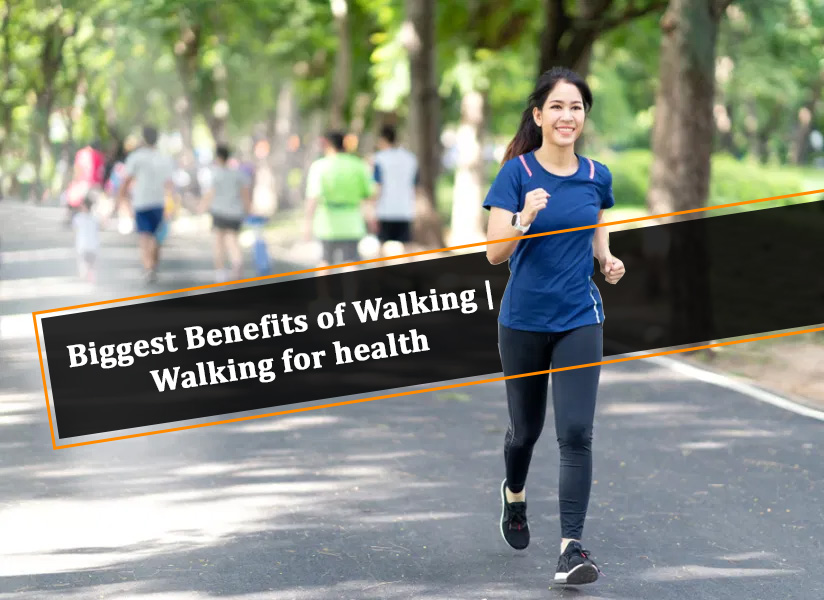Benefits of Walking for Bone Health
While walking might not be a high-intensity workout, it certainly comes with many health benefits. Not only is walking excellent for heart health, increasing your mood, sustaining a healthy weight, and improving circulation but also for maintaining your muscles and joints healthy and healthy. Once you have healthy and robust muscles and joints, you’re less liable to injury and decrease your risk of osteoporosis or other bone-density-related conditions. If you’re hunting for an easy, affordable thanks to learning more movement in your life, begin a walking program.
Walking has been shown to boost cardiovascular health, increase vital signs, control blood glucose, increase your metabolism, maintain weight, and maintain mobility. Rather than exclusively on flat terrain, think hiking or continuing hills to your route, and wear ankle weights to create your walk more difficult. There are such a significant number of unique advantages in possessing that particular distraction, a change in scenery, and seeing sunlight and fresh air.
Walking is also the proper exercise: it requires no equipment or special training, and you’ll be able to have a go at it anywhere. Plus, experts recognize that walking is one in all the most suitable types of cardiovascular training you’ll be able to take long before we could depend on cars, planes, or perhaps bicycles to produce around; walking served as a fundamental human function, letting us get from point A to point B. Now, many individuals “take a walk” not for transportation but health. Scientists and health specialists observe advantages to walkers’ physical fitness and subjective wellness.
You think more creatively.
A Stanford study found that boosts creativity. They were related to sitting, walking in any form approved creativity by a median of 60 percent among the study participants. The impacts were noticeable whether or not the person sat down at a desk right after their walk, too.
If you’re facing an original roadblock, take a walk to clear your mind and make space for brand new ideas.
On your fast walks, using your brain feels a touch easier.
Walking also can enhance cognitive performance. One study tested how children and young adults made memory tasks while on a treadmill. Once they were allowed to run as fast or as slow as they wanted, both groups completed their learning more carefully while walking.
Aids in Weight Loss
Can walking decrease belly fat? Well, the solution is yes. Walking could be a low-intensity exercise that will assist in losing weight and reducing belly fat. A study shows that individuals who are physically active burn more calories. Another study found that overweight women who walked for 50-70 minutes thrice per week for 12 weeks reduced their waist edge by 1.1 inches and lost 1.5 percent of their body fat.
Improves Heart Health
Walking daily for a half-hour will increase your pulse. The upper the center rate, the higher the blood circulation within the body. Brisk it is additionally known to lower the danger of high-pressure level, high cholesterol, and diabetes. In keeping with a study, walking also plays an integral role in the primary and secondary prevention of cardiovascular diseases.
Reduces the chance of Chronic Diseases
Walking lowers your glucose levels and your overall diabetes risk, per the American Diabetes Association. A study revealed that physical activity like walking could slash the danger of varied chronic diseases, including diabetes, carcinoma, carcinoma, obesity, hypertension, bone and joint disorders, and depression.
Increases Lung Capacity
Brisk walking for half-hour increases lung capacity, in keeping with the National Heart Lung and Blood Institute. Walking outdoors also will improve your lungs’ health as you’ll be inhaling the fresh air. Additionally, regular physical activity and exercise improve the general quality of life. Tadacip 20 or Cenforce 200mg helps you to achieve and keep an erection.
Helps to Curb Sugar Cravings
Overweight or obese those that walk for a quarter-hour every day are known to own reduced sugar cravings. Research has shown that acute exercise minimizes the urge for chocolates in normal-weight people too. Walking may provide some cognitive stimulation that interferes with the thought process that comes in after you are craving sugary foods. It also increases your body’s capacity to follow healthy food choices.
It lowers your disease risk
Having an everyday walking regimen can lower your risk of developing certain cancers. In care with the American Cancer Society, walking for seven hours per week may reduce your odds of receiving carcinoma after menopause by up to 14 percent.
Strengthen muscles and bones
Walking may be a weight-bearing exercise that builds muscles and maintains strong bones. It promotes bone and muscle strength, coordination, and balance. This, in turn, helps in preventing falls and fractures and improves overall health and movement. Aurogra 100 and Malegra 100 are for the treatment of male erecticle dysfunction.
Improves mood
This is one every of the foremost practical advantages of frequent walking. Whenever you’re thinking low, overburdened with responsibilities, stressed or anxious, provide yourself a while, leave everything you’re included in, and choose a good and pleasant walk. You’ll walk on your own house’s balcony, within the society or the part outside your home. It’ll assist you to feel less low and will even create you to feel light deep down.
Walking eases symptoms of the menopause
According to a study by the American Cancer Society, women who regularly walk after menopause may reduce their risk of carcinoma – even when doing no other kind of exercise. It’s believed that walking for a minimum of an hour every day cuts the chance by 14%. This is often because it improves levels of hormones that will help breast tumors to grow.
Plus, if you’re longing for menopause, walking could reduce the severity of your signs, especially when it happens to those linked to worry, anxiety, and depression.

